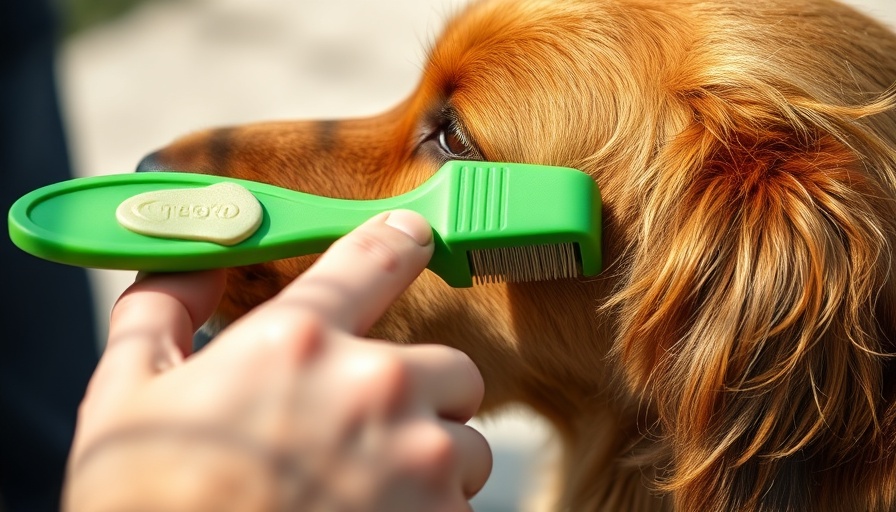
What Are Flea Dirt and Its Importance?
Flea dirt might not sound like a pressing topic, but understanding what it is and how to address it is crucial for your pet's health. Often mistaken for ordinary dirt, flea dirt is actually the waste produced by fleas—specifically, the remnants of digested blood taken from your furry friend. This tiny black speck looks similar to ground black pepper, and spotting it on your pet's skin or fur is a clear signal that fleas have set up residence.
Identifying Flea Dirt: Signs and Symptoms
While fleas are sneaky pests that can be hard to detect, flea dirt often provides a telltale sign of their presence. If you notice your pet scratching more than usual and see those black specks, it confirms an infestation. It’s important to remember that flea dirt itself is not harmful, but it indicates a bigger problem—an army of fleas feasting on your pet’s blood. This situation calls for immediate action, especially since fleas can also infest other wildlife, including rabbits and raccoons, leading to more exposure for your pets.
The Dangers of Fleas Beyond Flea Dirt
Understanding the risks associated with fleas goes beyond just dealing with flea dirt. Fleas can carry serious diseases not just for pets, but for humans as well. Among the diseases transmitted by fleas are:
- Cat Scratch Fever: This bacterial infection can be transmitted from cats to humans, often through scratches or bites.
- Flea-borne Typhus: Though rarer, this disease can create significant health issues for those infected.
- Tapeworm Infestation: Pets can unknowingly ingest flea eggs, leading to tapeworms, which require treatment.
- Bubonic Plague: An infamous disease historically linked with fleas, it remains a health threat in some parts of the world.
- Tularemia: Another serious disease, tularemia can affect both pets and humans, making early detection vital.
Each of these conditions underscores the urgency of promptly addressing flea infestations as soon as flea dirt is detected.
Combatting Fleas: Effective Strategies for Pet Owners
When dealing with flea infestations, acting swiftly is key. Here are some proactive strategies to help you tackle this problem:
- Consult a Veterinarian: Your first step should always be consulting a vet, who can recommend effective flea prevention medication like Credelio Quattro. These treatments are often highly effective and can help protect your pet from future infestations.
- Environmental Control: Fleas do not only reside on your pets; they can also thrive in your home. Regularly vacuuming carpets, washing pet bedding, and using flea preventative chemicals in the home can help remove the problem.
- Regular Grooming: Establish a routine for grooming your pets. This not only helps you spot fleas but also keeps your pets’ skin and fur healthy.
Implementing these practices will not eliminate the issue overnight but can significantly reduce the risk of flea infestation in your home.
The Importance of Flea Awareness
In the grand scheme of pet ownership, staying informed about fleas goes a long way. By recognizing the signs of flea dirt and understanding the potential implications for your pet's health and your household, you become an empowered owner who prioritizes well-being.
Imagine the bond you strengthen with your beloved pet by being proactive in their care and ensuring a flea-free home! Not only will it bring peace of mind, but it will also safeguard those moments of joy spent with your furry friend.
Conclusion: Your Role in Pet Health Care
As a pet owner, you play a critical role in ensuring their health and happiness. Knowing what flea dirt is and how to manage it effectively fortifies your pet's health and protects your home environment. Regular vet check-ups, proper hygiene, and awareness of the telltale signs of fleas can make all the difference in maintaining a healthy and vibrant pet life. Don't hesitate to take control and ensure your furry friends live comfortably without the nuisance of fleas!
 Add Row
Add Row  Add
Add 


Write A Comment